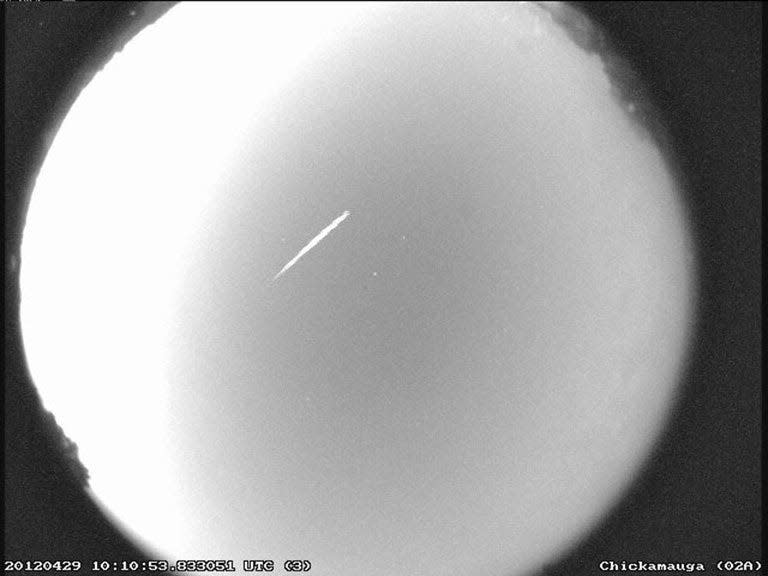When to see spring's final meteor shower, the Eta Aquarids
Now that the weather's finally warming up, it's a good time for some stargazing. And later this week, spring's final meteor shower – the Eta Aquarids – will dazzle early Friday.
Across the southern half of the U.S., you might be able to see 10 to 20 meteors per hour under the darkness, with no moon, when the radiant of the shower is high in the sky, EarthSky said.
The moon will be in its waxing crescent phase (roughly 15% full) when the shower peaks, according to Space.com. "While the show is most visible from the Southern Hemisphere or close to the equator, it is also visible to some folks in the north," Space.com's Elizabeth Howell said.
The shower favors the Southern Hemisphere because the point in the sky from which the meteors appear to come is in the constellation Aquarius, which is higher in the sky in the Southern Hemisphere.
Eta Aquarid meteors, also called the Aquarids, are known for their speed, according to NASA: The meteors travel at about 148,000 mph into Earth's atmosphere. Fast meteors can leave glowing "trains" (bits of debris in the wake of the meteor) that last for several seconds to minutes.
The broad peak to this shower – from April 15 to May 27 – means that some meteors may fly for a few days before and after the predicted optimal date of May 6.
Halley's comet is the source
The Eta Aquarid is one of Earth's two meteor showers that come from the debris trail of the famed Halley's comet. The other is the Orionid meteor shower, which occurs each October.
The meteors are pieces of dust and ice from the comet.
SHOOTING STARS: How to watch every meteor shower in 2022
Halley’s comet was discovered by Edmund Halley in 1705, but it is believed to have been recognized for millenniums. NASA said the comet is featured in the Bayeux tapestry, an embroidered cloth that depicts the Battle of Hastings in 1066.
The comet itself can be seen from Earth about every 76 years, but the particles that create the Eta Aquarid meteor shower were shed hundreds of years ago.

How to watch a meteor shower: Tips for the best viewing experience
If you're a newbie when it comes to meteor showers, here are some tips from EarthSky:
Give yourself at least an hour of viewing time for watching any meteor shower. Meteors tend to come in spurts that are interspersed by lulls. Also, it can take as long as 20 minutes for your eyes to adapt to the dark.
You need no special equipment to watch a meteor shower, but a little luck always helps. Find a dark, open sky away from artificial lights, and sprawl out on a reclining lawn chair. Meteor watching is a lot like fishing. Sometimes you catch a good number of them, and sometimes you don’t.
This article originally appeared on USA TODAY: Eta Aquarid meteor shower peaks later this week: How you can watch

